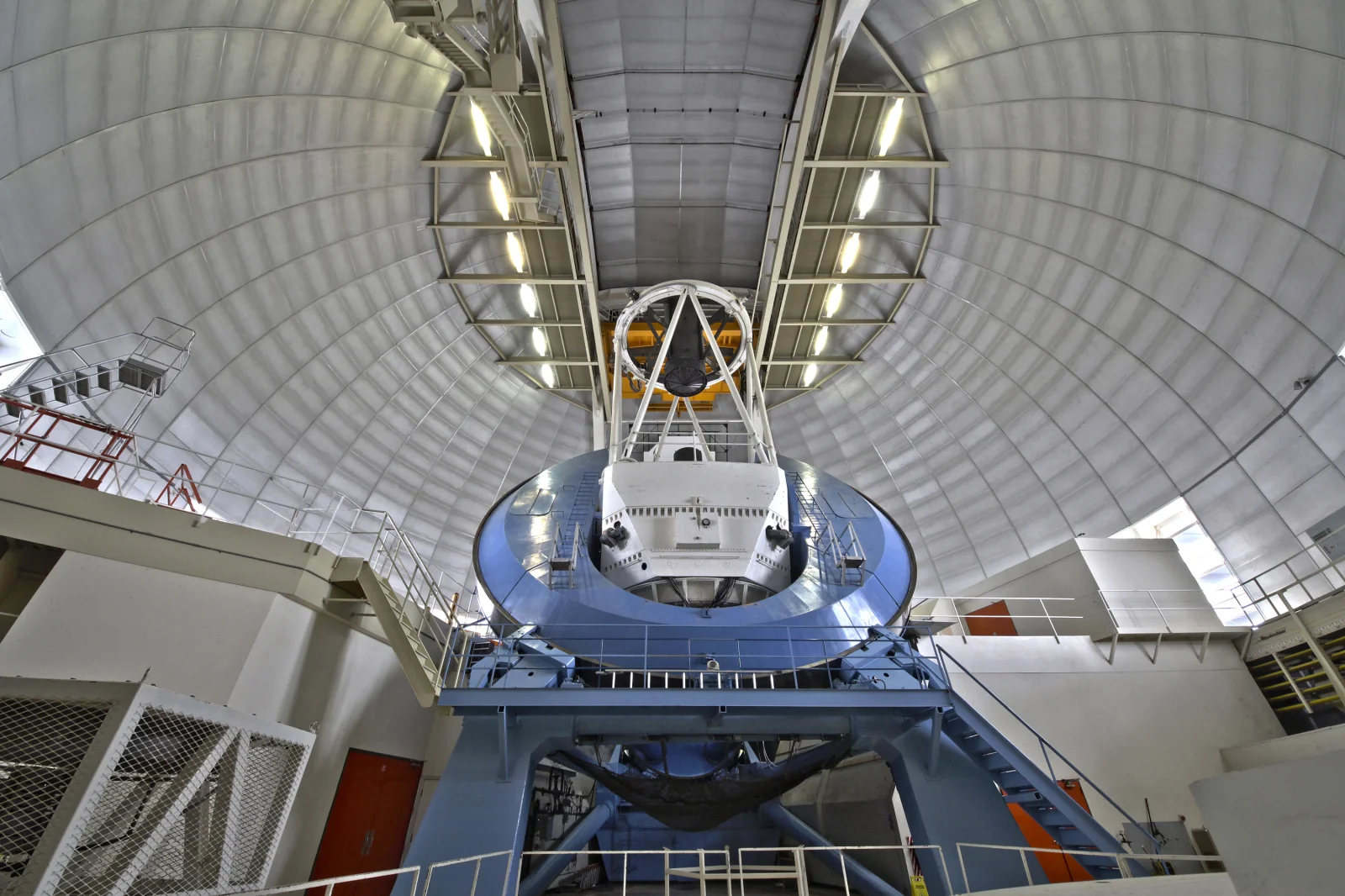Ground Instrumentation
DESI


Spectrograph that investigates dark energy by observing tens of millions of galaxies

DESI (Dark Energy Spectroscopic Instrument) is a ground-based dark energy experiment that aims to study baryon acoustic oscillations (BAO) and the growth of the structure of the Universe through the galaxies’ velocity effect caused by the attraction of the gravitational force (peculiar velocities). To this end, the project is building a multi-fibre spectrograph with the aim of obtaining tens of millions of spectra, in order to map the structure of the Universe and study dark energy.
DESI observations will investigate various aspects of cosmology, from dark energy to alternatives to General Relativity, from the sum of neutrino masses to the early Universe. DESI data will be used to create three-dimensional maps of the distribution of matter covering a large volume of the Universe in great detail. DESI will measure the expansion history of the Universe using the BAO imprinted in clusters of galaxies, quasars, and the intergalactic medium.
The DESI instrument is a spectrograph in which the positioning of the fibres is robotically controlled and is capable of taking up to 5000 simultaneous spectra in the wavelength range 360 nm to 980 nm. This powerful instrument is installed at the main focus of the 4-metre Mayall telescope at Kitt Peak Observatory, Arizona, together with a new optical corrector, which provides a field of view three degrees in diameter. In total, more than 30 million spectra of galaxies and quasars will be obtained to measure the BAO feature and determine the power spectrum of matter, including peculiar velocities.
THE IEEC CONTRIBUTION
Part of the IEEC researchers participating in the DESI project do so as part of the Regional Participation Group (RPG) BCN-MAD. The Institute is the representative of the RPG in the DESI Institutional Council, and is in charge of delivering the instrument's guidance, focus, and focal plane alignment units, as well as the guidance software. The Institute leads the Image Validation Working Group and participates in other working groups.
In addition, the Institute has contributed to the development of the technique of DESI data blinding to hide the real BAO signal and peculiar velocities in the intermediate stages of analysis. This avoids human bias by correcting the data for spurious effects. On the other hand, the IEEC has proposed a novel technique for analysing DESI data, which not only uses the BAO and RSD signals, but also takes into account the signal originating in the early Universe, which has not been used in this type of analysis until now. The Institute's researchers are part of the DESI Outreach Council, as well as the group responsible for the official analyses of the first year of observation involving BAO and peculiar velocity measurements.
